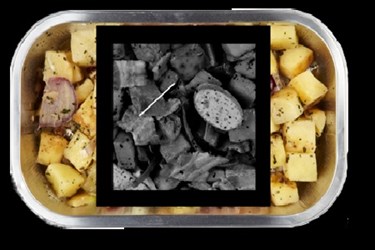Are X-Ray Inspection Systems Right For Me?
By Melissa Lind, contributing writer

Increasing scrutiny over safety and security of the food supply chain has left some processors scrambling for ways to ensure procedures are compliant with current and upcoming regulations. X-Ray technology is an obvious choice for some, but it isn’t for everyone — coming with both some advantages and some drawbacks.
Upcoming implementation of FSMA demands that all food processors take immediate steps to ensure that processing lines meet all new requirements. FSMA compliance is the catalyst for the new found focus, but foreign body contamination causes rejected products, shutdowns, and losses in efficiency. Should contaminated products reach the market, a recall leads to the loss of consumer confidence, and all of these conditions can have a negative impact on the bottom line.
Video: Newest Innovation In X-Ray Product Inspection
X-ray technology has evolved to a point where it is a cost-effective method to detect foreign body contamination and perform quality checks in many food products, but it doesn’t work on all food products or with all processing lines. For some food makers, it is likely the most popular solution, but not always the best.
Benefits Of X-Ray Inspection Systems
X-ray systems work on food products in basically the same way they work on people. Electromagnetic energy is sent through a food product and is reduced in varying degrees based on the density of different constituents of the object. When the X-ray wave encounters a denser object, more energy is absorbed, when it encounters a less dense object, more energy passes through. This allows us to see a picture of the inside of that particular object.
Food X-Ray Inspection Equipment: What You Should Know
These systems are useful for detecting solid-body contamination — glass, rubber, stone, bone, metals and, some plastics — in food products. X-ray waves can also go through most types of packaging and can be used for in-line production at the most vulnerable areas of the processing line defined by the principles of Hazard Analysis and Critical Control Points (HACCP). The technology can be used as a quality check to verify the presence and density of ingredients such as peanuts in chocolate bars. X-ray systems are quite durable under most conditions, making them an effective way to avoid solid-body food contamination in many different types of products under different operating environments.
Drawbacks Of X-Ray Inspection Systems
X-ray systems are good for many things, but not for everything. The capability of X-ray units to detect foreign objects is based on the density of the product. If a contaminant is small or can absorb water present in the food object, it will likely not be detected. Contaminants that are less likely to be detected by x-ray include hair, paper or cardboard, low density or flexible plastics, string, wood, soft bones or cartilage, and very small fragments of glass, metal, and certain stones.
Learn how Food Safety Regulations Are Steering The Evolution Of Product Inspection
Many people are concerned about the potential for irradiation of food along with the health and safety of employees when using X-ray inspection systems. This is only a perceived disadvantage, as X-ray inspection systems put out much lower doses of radiation than can generally be received from everyday exposure to background radiation within the environment. X-ray systems have the potential to be costly, but continuing advances in the technology are, and will continue to, make the process more attractive with increasing reliability, improved image quality, and greater affordability.
